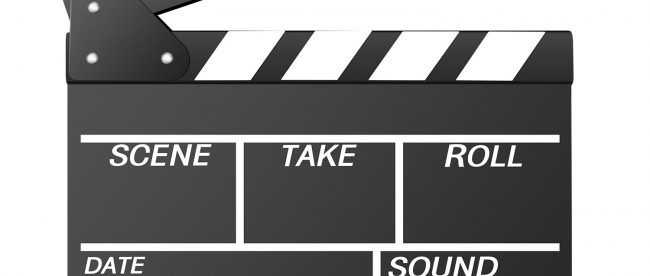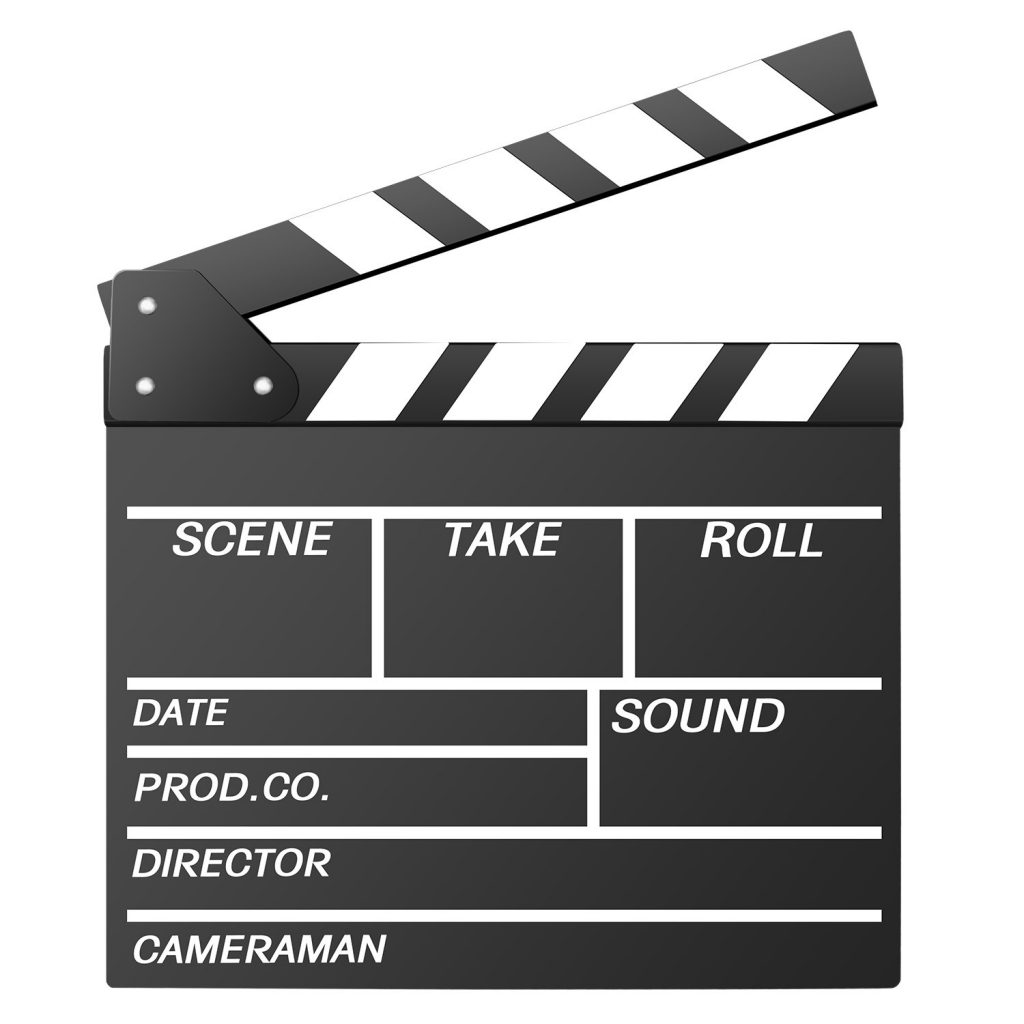Why Filmmakers Use That Black and White Flapped Board

Someone shouts for everyone to be quiet on the set. The performers get into character, the camera and microphone operators get into position, and a person with a black-and-white board positions him or herself in front of the main camera. The board person — for lack of a better term — may announce the act and scene, maybe not. But either way, he or she drops the top flap of the board, allowing it to hit with a loud clapping sound. “And… action!” says the director, and we’re off making a movie.
Even if you know next to nothing about making movies, most of the above happens for a rather clear reason. Actors act; camera and mic operators record video and sound, respectively; and the director directs. But what about the person with the odd-looking board? You know, with this thing, below? What’s it for?

That device is called a clapperboard or a slate. Its job is to make a loud bang — and that’s a very important job.
If you’re taking a video on your smartphone or on a home camcorder (remember those?), you don’t need one of these. That’s because, as HowStuffWorks notes, “if you have a video camcorder, then you are used to video and sound getting recorded on the same tape. The sound and video are always synchronized because they are recorded together in one place.” It’s simple.
But when professionals make movies, that’s not the case. The cameras record the video and the microphones capture the sound separately. An editor has to take the video footage and the sound recording and reconcile the two, combining them into one unified experience. But to do so, he has to know how the audio and video sync — and having something distinct, clear, and unambiguous is key.
The clapperboard is a simple but elegant solution. As Mental Floss explains, “the clap or click of the board is easy for editors to pick out on the audio track and match to the visual of the clapper clapping on the film, syncing the moving picture with the sound.” The editor takes the clicking noise and aligns it with the moment the clapperboard flap hits the base, and absent some unforeseen glitch, the rest of the audio and video sync up perfectly.
While this method has been in place for decades, it may be going away. Newer clapperboards have digital counters on them — see an example here. The numbers on the board are digital timecodes generated by the audio recorder, making it even easier for an editor to combine the audio and video — and making the clapping sound ultimately unnecessary.
Bonus fact: So what happens if you forget the clapperboard? In one case, it meant that the film was ultimately delayed by nearly 40 years. In 1972, filmmakers recorded footage of singer Aretha Franklin for a documentary but failed to employ a clapperboard. Despite some rather intense efforts — at one point, the edit team hired a lipreader to help sync things up — the footage proved unusable. Only in 2011 did filmmakers finally piece everything together, according to Rolling Stone. (And even then, the film didn’t come out until 2018, due to objections from Franklin and her camp.)
From the Archives: Back to the Archive Footage: Behind the scenes from Back to the Future.
